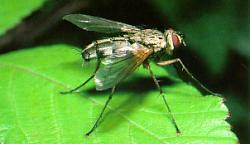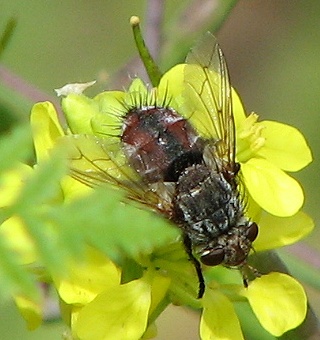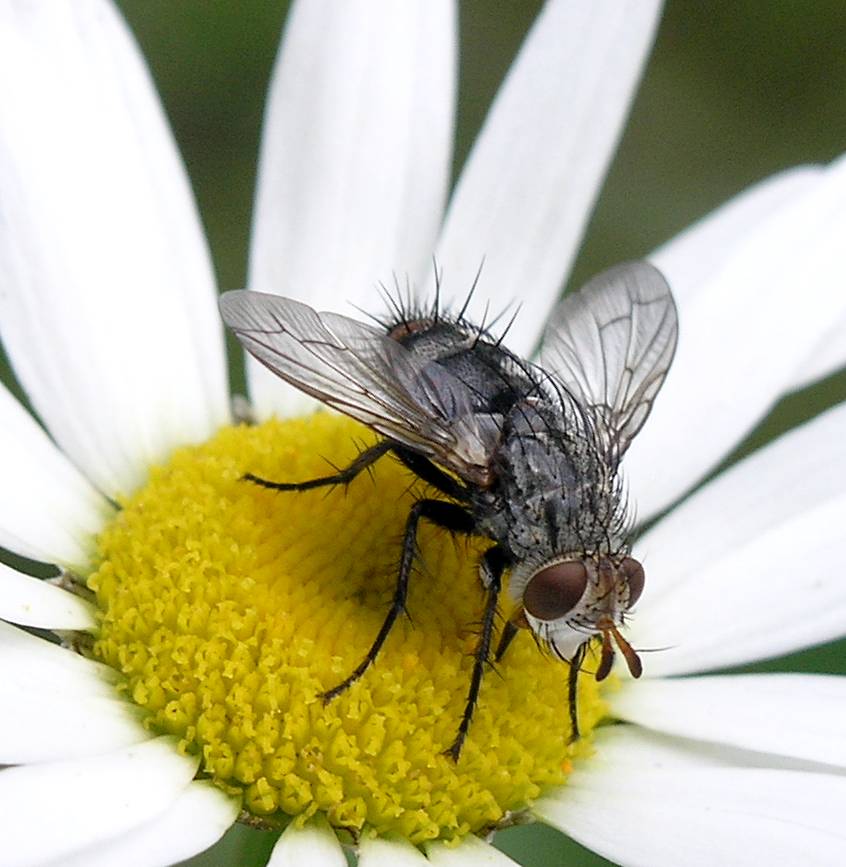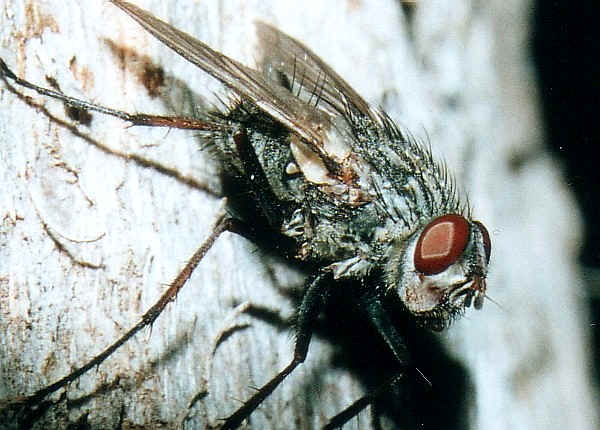|
TACHNID FLY |
|||
|
|
Tachnid flies are considered beneficial because they kill and eat lots of different kinds of insects in gardens and in the fields. The other insects they eat includ: caterpillars, beetles, sawflies, borers, and green stink bugs . They also eat such pests as: cutworms, codling moths, tent caterpillars, cabbage loopers, and gypsy moth larvae. Gardeners like to see Tachnid Flies among the vegetables and flowers because they prey on so many different kinds of insects that harm plants. These valuable flies can be attracted to the garden by planting flowers and herbs such as dill, parsley and Queen Anne's Lace. They also love spearmint.
Tachnid Flies look very much like common house flies. There are many different species of Tachnid Flies, but nearly all of them are predators that eat other garden pests. Most Tachnid Flies are 1/3 to 1/2 inch in length. Adults can be identified by the course bristles (like whiskers) covering their abdomens. Tachnid flies can be many colors including: mottled black, grayish, or brown - but none of them are brightly colored. Females lay eggs on the bodies of host insects or on plants. The larvae mature inside the unsuspecting host insect, usually killing it. The fully grown larvae then drop from the host and into the soil, where they continue to grow to adulthood. Tachinid fly larva are yellow. Females lay their tiny white eggs on or near a host like caterpillars, corn borers, cutworms, sawflies, grasshoppers and armyworms. One survival mechanism is the female can literally glue it's eggs to the host. One female can lay up to 6,000 eggs. They can go through a complete lifecycle in 3 weeks and produce an abundance of garden protectors all during the growing season. The eggs hatch on the host, the larva then enter the host, feeding off of them. The larva usually end up killing the host. When they are done feeding the larvae drop to the ground, pupate and emerge as adults in June to September.
|




